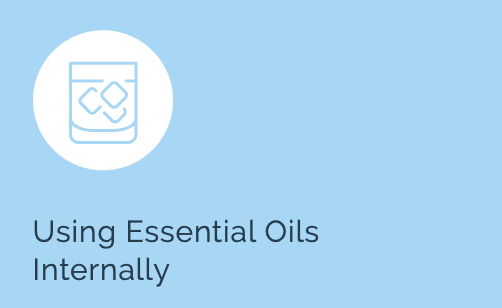
Both aromatic and topical applications of essential oils are easy to experience. When you want uplifting, energising, or calming aromas, aromatic usage provides a quick and simple access. When you want to soothe, moisturise, nourish, or soften your skin, topical usage can efficiently deliver the desired effect. What then is the advantage of using essential oils internally?
While internal use of oils is a mystery to some, research has found a myriad of safe, beneficial internal uses for essential oils. Plus, internal usage of essential oils offers some exclusive benefits for the body that neither aromatic nor topical can deliver.
Is it safe to take essential oils internally?
Internal use has been greatly debated in the essential oil community for years, but research continues to confirm and validate its safety. If you’ve never taken essential oils internally before, it might seem strange to consume something so powerful and potent. However, essential oils come from plants, fruits, and compounds found in nature; therefore, they provide a safe way of receiving internal benefits. You’re likely already incorporating essential oils into your daily diet, as many of the foods we eat contain a small amount of essential oil. Because our bodies are designed to metabolize and process natural compounds like plants and fruit, we’re already equipped to metabolize essential oils. Remember, they’re just high concentrations of natural compounds— what give plants their taste and smell.
Because of the way they interact with the body, it’s important to know that some essential oils are never appropriate for internal consumption, much like how certain plants should never be eaten. However, plenty of oils—like plants—can be safely ingested and processed by the body.
The French Model
The French Model for essential oil application advocates for the internal use of essential oils to achieve specific benefits. This model was backed by prominent professionals in the world of aromatherapy, like Jean Valnet, Paul Belaiche, and Henri Viaud. The French Model substantiates the idea that oils can be used internally for health maintenance and other wellness benefits, as long as correct dosages are applied.
How internal usage works So what happens when you take an essential oil internally? When you ingest an oil, it directly enters your bloodstream through your gastrointestinal tract, where it’s then distributed throughout the rest of your body. Because oils are lipid-soluble, they’re easily absorbed and transported to your organs, including the brain. Though your body is designed to metabolize and process natural compounds like essential oils, it’s important to remember that the body can only handle oils in appropriate doses. Ideas for internal usage While internal usage requires a little precaution and education, you can safely use essential oils internally in your daily life. Before you use essential oils this way, make sure to read labels and instructions, paying particular attention to oils that aren’t labeled as safe for internal use. In a given day, you probably consume a variety of products to try and strengthen, fortify, uplift, or energise your body. While things like supplements and stimulants seem to help the body function properly, essential oils provide a natural way to keep yourself healthy and energised.



